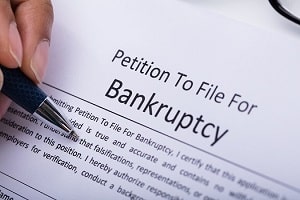What Causes Bankruptcy & What Are Its Consequences?
Bankruptcy filings in the year 2022 totaled around 387,721. This is lower in comparison to the 413,616 cases in 2021. Even with the fall in rates, what pushes these individuals to file for bankruptcy?
Top Reasons For Going Bankrupt
There are underlying reasons for bankruptcy and they may not necessarily be tied to financial irresponsibility. With the rising cost of goods and economic setbacks, bankruptcy is on the rise among individuals. Here are some of the causes.
Medical Bills
An unexpected medical emergency, with medical bills, time off work, and loss of income coming together can be a big hit to overcome. The American Journal of Medicine claimed that 62.1% of bankruptcies were caused by medical bills. The same survey showed that it is not only the uninsured that are hit, with 72% of those filing for bankruptcy due to medical causes having some kind of medical insurance coverage.
Income Cuts
The economic situation that the pandemic caused and its impact on industry and retail is causing companies to try and reduce their expenditure. The result has been that some employees have faced cuts in pay, with bonuses disappearing.
Job Loss
Unemployment rates in Texas moved from 3.4% In May 2019 to 12.9% in April 2020, before settling at 6.5% in May 2021. This disruption may have had a major impact on the number filing for Chapter 7 bankruptcy in the state.
Credit Debt
60% of Americans owe their creditors for at least a year, with 40% in debt for two years, and 19% in for five years. Among these statistics, 60% of people who file for bankruptcy take home less than $500 per week. Consider that the average debt in the past two years was $5,525 and some may have trouble paying that off. In that case, bankruptcy becomes an option.
Divorce
Living as two separate households instead of one may add even more financial difficulties, leading to the slide towards bankruptcy. Debts may be divided among the two parties, and an ex-spouse may be unable to pay them off.
Student Loans
Student loans are also a major source of debt. The average student loan in Texas per borrower is $32,920 as of January 2023. This is lower than the national average of $37,574. Still, with more than four million borrowers who defaulted on their student loans across the United States, bankruptcy becomes an attractive option.
Utility Costs
The inability to pay a utility bill may not be an individual’s reason to file for bankruptcy, but it may well be a symptom of a wider financial problem.
Foreclosure
In Texas, sometimes foreclosure and bankruptcy are connected. It is not uncommon to file for bankruptcy to stop foreclosure. Property is another area where you should seek counsel, as there may be ways of mitigating the situation.
Poor Financial Management
If someone consistently spends more than they earn, it can eventually end in disaster. Similarly, not making provision for unexpected costs can also place oneself at risk.
Other Unexpected Expenses
The breakdown of a vehicle that is needed to get to work, may not seem like a major emergency but the cost of getting it repaired can cost almost a whole week’s wages. These same people may be loaded with debt already and the unexpected expense might well be enough to bring everything tumbling down.
The Consequences Of Bankruptcy
Bankruptcy can give an individual the opportunity to make a fresh start. However, it is essential to think carefully before taking this step. Seek assistance from an experienced bankruptcy attorney to avoid severe consequences.
Here are a few possible effects of filing for bankruptcy.
- Your credit score will be negatively impacted.
- Bankruptcy remains on your credit score for years.
- Bankruptcy becomes a matter of public record.
You will need to carry the burden of bankruptcy for several years until you pay off your debts. Make sure you think it through before filing.
Seek A Bankruptcy Attorney Today
It’s best to consult with a professional to mitigate the impact of bankruptcy on you. Austin Bankruptcy Lawyers assists individuals in examining avenues to alleviate debts through filing for bankruptcy. The firm also helps in filing and petitioning, so you can strengthen your case.
Summary
Poor financial management is not the only cause of bankruptcy. A few other common causes are medical bills, income cuts, and job loss. Credit debt, divorce, and student loans may also lead to bankruptcy.
Rising utility costs, property foreclosure, and unexpected expenses may also push individuals to bankruptcy. Bankruptcy affects your credit, your property, and your public record. If you’re looking to file for it, be sure to consult with a bankruptcy attorney.
& Let’s Discuss How We Can Best Help Eliminate Your Specific Financial Struggles!






